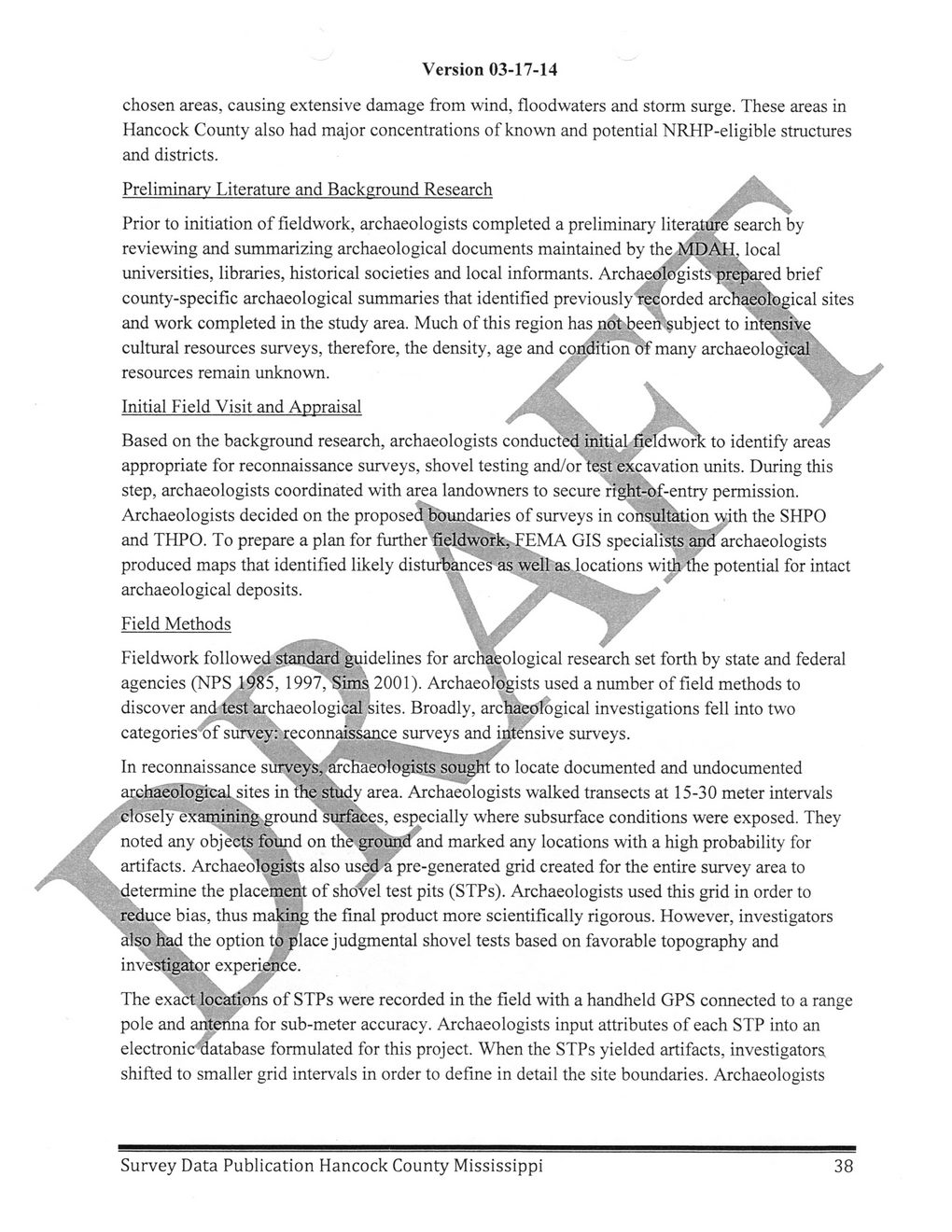This text was obtained via automated optical character recognition.
It has not been edited and may therefore contain several errors.
Version 03-17-14 chosen areas, causing extensive damage from wind, floodwaters and storm surge. These areas in Hancock County also had major concentrations of known and potential NRHP-eligible structures and districts. Preliminary Literature and Background Research Prior to initiation of fieldwork, archaeologists completed a preliminary literature search by reviewing and summarizing archaeological documents maintained by the^MpAH, local universities, libraries, historical societies and local informants. Archaeologists prepared brief county-specific archaeological summaries that identified previously recorded archaeological sites and work completed in the study area. Much of this region has not been-subject to intensive cultural resources surveys, therefore, the density, age and condition of many archaeological \ resources remain unknown. Initial Field Visit and Appraisal . .. \ . \ Based on the background research, archaeologists conducted initial fieldwork to identify areas appropriate for reconnaissance surveys, shovel testing and/or test excavation units. During this step, archaeologists coordinated with area landowners to secure right-6f-entry permission. Archaeologists decided on the proposed boundaries of surveys in consultation with the SHPO and THPO. To prepare a plan for further fieldwork, FEMA GIS specialists and archaeologists produced maps that identified likely disturbances as well as locations with the potential for intact archaeological deposits. ■ . ■’ Field Methods Fieldwork followed standard guidelines for archaeological research set forth by state and federal agencies (NPS 1985, 1997, Sims 2001). Archaeologists used a number of field methods to discover and test archaeological sites. Broadly, archaeological investigations fell into two categories’of survey: reconnaissance surveys and intensive surveys. In reconnaissance surveys, archaeologists sought to locate documented and undocumented archaeological sites in the study area. Archaeologists walked transects at 15-30 meter intervals \ \ closely'examining ground surfaces, especially where subsurface conditions were exposed. They noted any objects found on the ground and marked any locations with a high probability for artifacts. Archaeologists also used a pre-generated grid created for the entire survey area to determine the placement of shovel test pits (STPs). Archaeologists used this grid in order to reduce bias, thus making the final product more scientifically rigorous. However, investigators f also had the option to place judgmental shovel tests based on favorable topography and investigator experience. The exact locations of STPs were recorded in the field with a handheld GPS connected to a range pole and antenna for sub-meter accuracy. Archaeologists input attributes of each STP into an electronic database formulated for this project. When the STPs yielded artifacts, investigators, shifted to smaller grid intervals in order to define in detail the site boundaries. Archaeologists Survey Data Publication Hancock County Mississippi 38

Hancock County History and Archeology Survey-Publication-Data-2014-(41)